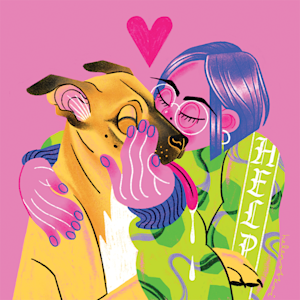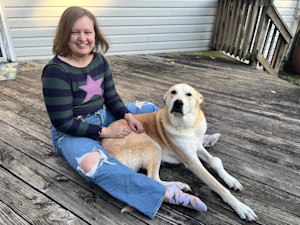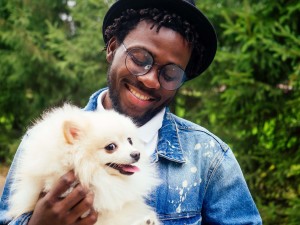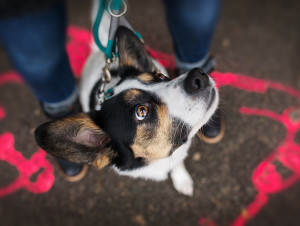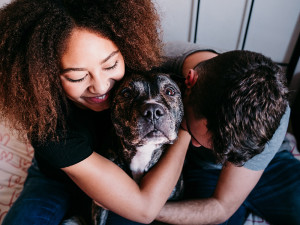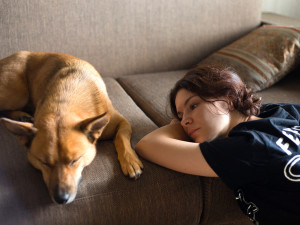Your Dog Is Mad at You, and You Don't Even Know It
This study says we may not know our BFFs as well as we think we do.
You know when your dog is happy or playful, when they desperately want a bite of your snack or a leisurely walk around the neighborhood. You know their expressions and their moods and could easily pick your pup out of a lineup of similar-looking dogs. You may even pride yourself on knowing your dog better than you know anyone else. And if you wake up every day thinking that your friends might be mad at you for some reason (TikTok is full of people expressing this generational paranoia) at least you can always count on your dog to be on your side. Right? Right?
The reality is you may not know your dog quite as well as you think you do. A recent studyopens in new tab led by the DogStudies research group at the Max Planck Institute of Geoanthropology found that humans aren’t the best at recognizing aggression in dogs — or even other humans. This lack of recognition can lead to serious danger, especially when approaching a strange dog.
Trick question: All dogs are perfect! But find out which type is the best fit for you.
The Wildest spoke to Dr. Juliane Bräuer, DogStudies Research Group Leader and senior author of the research article, and we explore why you may be misinterpreting one of your dog’s biggest emotions.
Recognizing Aggression is Not Our Strong Suit
The experimenters involved in the study expected their subjects to have no problem recognizing aggression in dogs. After all, dogs are known as man’s best friend for a reason. But on this count, they were proven wrong. In fact, participants performed especially poorly when it came to spotting aggressive interactions, regardless of whether they were dog parents or not. The signs of dog aggression can vary, after all: They include a forward-leaning stance, a stiff body, a raised tail, and ears that are up and forward.
How much do you spend on your pet per year?
“We know that dogs are very good at reading humans,” Dr. Bräuer says, noting that this is a skill that dogs have developed over time throughout their evolution from wolves. “But we’re not only bad at recognizing aggression; we’re also bad at predicting what’s happening in a playful interaction, where it’s not so clear. For example, maybe one of the dogs didn’t mean to be aggressive, but the other dog perceived it that way.”
Thankfully, we mere humans aren’t too shabby when it comes to understanding dogs’ more playful intentions with each other, so when you see your pup make a new friend at the dog park, you’re probably easily able to tell if things are going well. But humans tend to underestimate aggression in dogs, unless the emotion is severe.
Our Love for Our Pups May Cause Bias
Researchers theorize that one reason we may struggle to recognize aggression is simply because we love dogs and assume the best of any canine we see, regardless of what their expressions and body language may tell us.
“We have this picture that we are nice humans, and these are nice, cute, little dogs,” Dr. Bräuer says. “We expect the best of them.”
If you’re like most pet parents, you’re constantly snapping photos of your precious pup and speaking to them in a baby voice that would embarrass you if anyone heard it. So maybe it’s no surprise that our love for our dogs could keep us from realizing when they’re truly angry.
H2 NEEDED HERE We’re No Better at Reading Human Aggression
Perhaps the most surprising part of the study is the revelation that humans aren’t even skilled in recognizing aggression in each other. Just as bias may blind us to the genuine feelings of canines, we may automatically assume the best of our fellow humans as well. So, unless someone is obviously angry with you (we’re talking screaming and cursing), you may miss the signs of aggression even in people around you.
“With severe aggression, no matter the species, we’re good at recognizing,” Dr. Bräuer says. “When it’s more subtle, then it starts to be more difficult.”
No matter how much you love your dog (and we bet it’s a lot), it’s important to understand how they communicate so you can better meet their needs and speak in their language. Love can certainly bridge the divide between you and your dog, but it never hurts to learn a little more about your four-legged best friend — the better to translate that love into body language (and plenty of pets and kisses).




